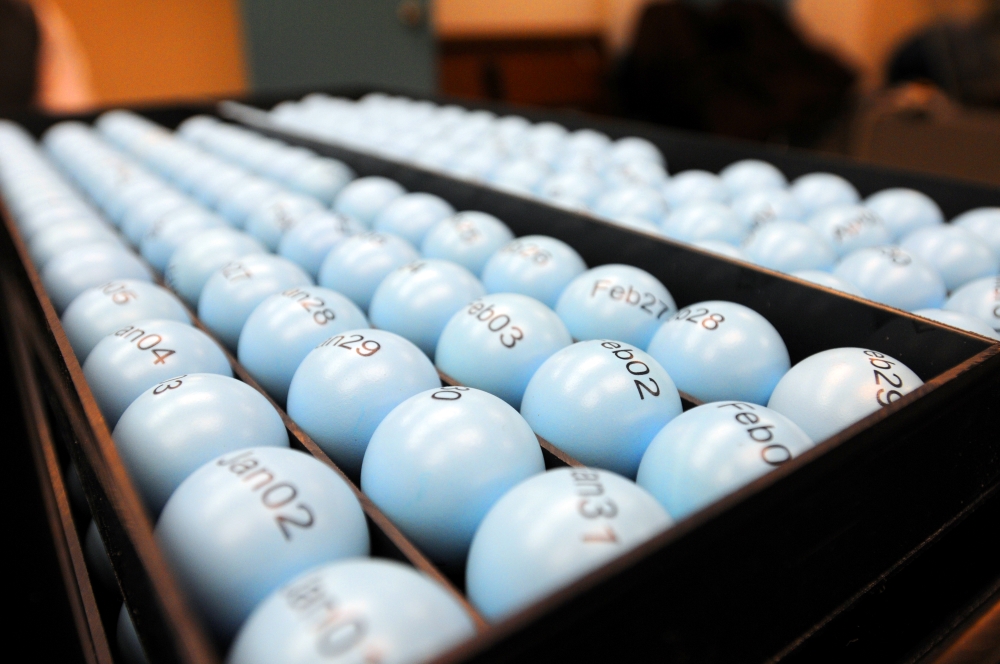The lottery process begins with two large air lottery drawing machines. First, 365 (366 for men born in a leap year) balls having both a date and a month on each of them are loaded in one of the machines. Second, balls with a number from 1 to 365 (366 for men born in a leap year) on each are loaded into the second machine. Official observers certify that all air mix balls were loaded in the Titan lottery drawing machines. This is done in full view of all observers, officials, and the media.
One lottery ball is drawn randomly from the machine containing those with dates marked on them, and one is then drawn from the machine containing balls with numbers 1 through 365 (366 if the draft will call men born during a leap year) marked on them. The date and number are paired to establish the sequence number for each birth date.
For example, if the date August 4 is drawn first from the “date” machine, and the sequence number of 32 is drawn from the “numbers” machine at the same time, then those men turning 20 on August 4 would be ordered for induction processing only after men whose birthdays drew sequence numbers 1-31. The drawings continue until all 365 (or 366) birthdays of the year are paired with a sequence number.
After the lottery is completed and results are certified, the sequence of call is transmitted to the Selective Service System’s Data Management Center. Almost immediately, the first induction notices are prepared and sent via the U.S. Postal Service to men whose birth dates drew the lowest lottery numbers, starting with sequence number 1. The number of sequence numbers called for induction processing is based on the quota for personnel given by the Department of Defense.
This system, based on random selection of birth dates, with the order of priority for reporting assigned in a random manner, is a fair and just method of calling men to serve.

